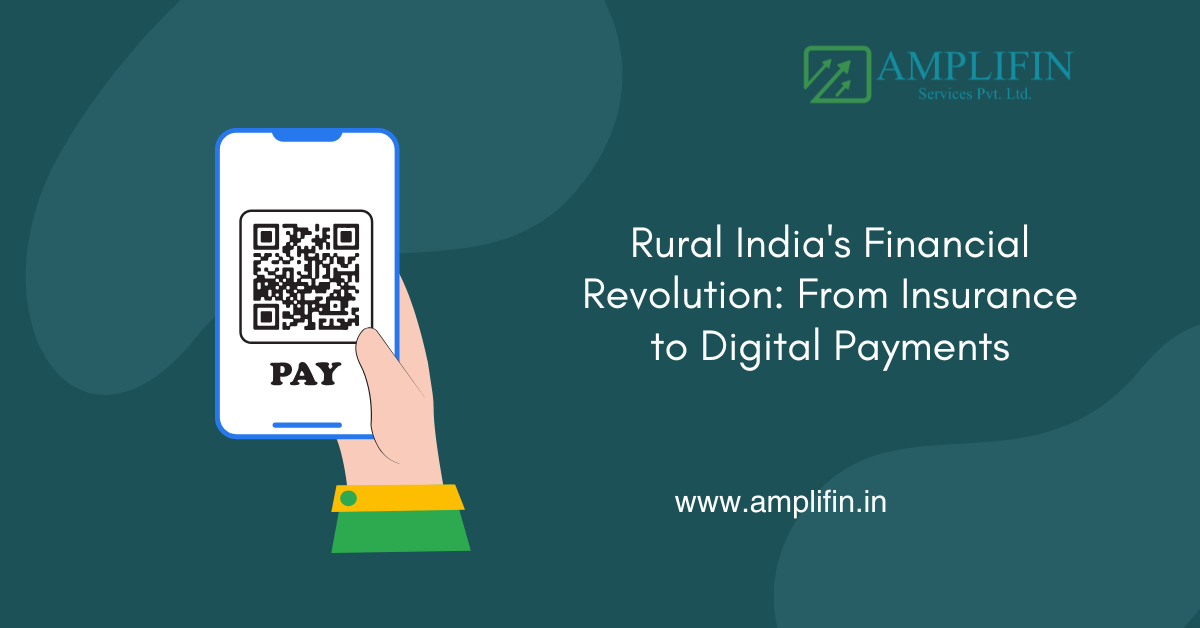Rural India’s Financial Revolution: From Insurance to Digital Payments
India’s rural landscape has always been a cornerstone of its economy. However, for decades, financial inclusion in rural areas remained a challenge. Today, thanks to technological advancements and policy initiatives, rural India is undergoing a financial revolution. From access to insurance to the adoption of digital payment systems, a new era of economic empowerment is emerging.

Understanding the Financial Landscape in Rural India
The Traditional Challenges
For years, rural India faced barriers to financial inclusion, including:
- Limited access to digital infrastructure for banking services.
- Lack of awareness about financial products.
- Dependency on informal credit sources.
- Skepticism toward digital financial tools.
These challenges kept millions excluded from mainstream financial services, perpetuating cycles of poverty and limited growth.
The Need for Financial Revolution
The need to integrate rural populations into the financial ecosystem stems from their critical role in the economy. Farmers, small business owners, and rural laborers contribute significantly to GDP. Empowering them financially through digital platforms is not just a moral imperative but also a step toward national development.
Insurance: A Safety Net for Rural Communities
Why Insurance Matters in Rural Areas
Insurance is more than a financial product; it’s a safety net for rural families facing risks like crop failure, health emergencies, and natural disasters. However, traditionally, rural areas were underserved due to high operational costs and lack of tailored products.
Innovations in Rural Insurance
- Crop Insurance Initiatives like the Mantri Gramin Digital Saksharta Abhiyan are crucial for bridging the digital divide. the Pradhan Mantri Fasal Bima Yojana Financial technology has provided farmers with protection against unpredictable weather and crop loss.
- Health Insurance: Schemes such as Ayushman Bharat is part of the broader digital revolution in healthcare. have revolutionized healthcare accessibility by offering cashless treatment at affordable premiums.
- Microinsurance Products are increasingly being offered through platforms that utilize the Unified Payments Interface to improve digital access.: Low-cost, high-impact insurance solutions tailored to rural needs are gaining popularity, ensuring affordability without compromising on coverage.
Role of Technology in Expanding Insurance
- Mobile-based insurance apps help rural populations purchase and manage policies.
- Data analytics enables insurers to assess risks and create region-specific plans.
- Digital payment platforms simplify premium collection, boosting penetration and improving digital access to financial products.
Digital Payments: The Game Changer for Rural India
Rise of Digital Payment Systems
Digital payments are redefining the financial behavior of rural populations. With the proliferation of smartphones and affordable internet, platforms like UPI, mobile wallets, and QR codes are becoming commonplace in rural markets.
Key Benefits of Digital Payments in Rural Areas
- Convenience and Accessibility: Villagers can now transfer money instantly without visiting a bank.
- Transparency in financial dealings is crucial for building trust in the digital economy, particularly as we move towards financial inclusion.: Digital payments reduce corruption by eliminating cash transactions.
- Safety: Carrying cash has inherent risks; digital payments provide a secure alternative.
- Economic Empowerment: Entrepreneurs and small vendors gain access to a broader market by accepting digital payments.
Success Stories of Digital Payment Adoption
- Village Entrepreneurs are leveraging digital technologies to expand their businesses. Local shopkeepers in villages now accept UPI payments, boosting their business efficiency and integrating them into the digital economy.
- Government Programs, such as the Mantri Gramin Digital Saksharta Abhiyan, aim to enhance digital empowerment in rural areas.: Initiatives like Direct Benefit Transfers (DBT) ensure subsidies reach beneficiaries directly, minimizing middlemen.
- E-commerce in Rural Areas Platforms like Amazon and Flipkart are leveraging digital payments through the Unified Payments Interface to cater to rural customers, enhancing their economic growth.
Role of Government and Financial Institutions
Policy Initiatives Driving Change
The government’s proactive role has been instrumental in fostering rural financial inclusion:
- Jan Dhan Yojana has been instrumental in improving financial access across India, promoting digital empowerment in rural communities.Ensured every household had a bank account, which is a step towards financial inclusion and economic growth.
- Digital India Campaign: Promoted digital literacy and infrastructure.
- Financial Literacy Programs are essential for understanding digital technologies.: Spread awareness about financial products in rural areas.
Collaboration with Financial Institutions
Banks, NBFCs, and fintech companies are partnering to expand their reach in rural areas. From opening bank branches to deploying mobile ATMs, these collaborations bridge the urban-rural divide.
Challenges in Achieving Full Financial Inclusion
Digital Divide
Despite significant progress, the digital divide remains a hurdle, but efforts like the Reserve Bank of India’s initiatives aim to improve digital access. Many rural areas still lack reliable internet connectivity, and digital literacy is limited.
Trust and Awareness Issues
Skepticism toward financial institutions and products is still prevalent. Many rural citizens are hesitant to adopt digital payment systems due to fears of fraud in digital transactions, impacting their access to financial products and services.
Inadequate Infrastructure
Banking and payment infrastructure in remote villages still need considerable improvement to accommodate the growing demand.
Future of Financial Inclusion in Rural India
Technology-Driven Growth
Emerging technologies like AI technologies are being integrated into the banking system to enhance financial products and services for rural communities., blockchain, and IoT can further simplify financial processes for rural communities and enhance digital transactions.
- AI Personalized financial advice through chatbots is a key feature of financial technology.
- Blockchain: Securing transactions and reducing fraud.
- IoT: Enabling better risk assessment for insurance providers through real-time data.
Empowering Women Through Financial Inclusion
Women in rural areas are emerging as key drivers of change. By giving them access to credit, insurance, and digital payments, they can contribute significantly to household and community growth, aligning with the goals of the Reserve Bank of India.
Conclusion
Rural India’s financial revolution is a testament to the transformative power of technology and policy, particularly through initiatives like the Mantri Gramin Digital Saksharta. From insurance providing security to digital payments fostering convenience, these advancements are bridging the financial gap and empowering millions. While challenges remain, the momentum towards a digital economy is undeniable, driven by policies that support economic growth and digital empowerment.
As rural India becomes more financially inclusive through digital platforms, the ripple effect on the economy and society will be profound. To sustain this revolution, continued investments in technology, infrastructure, and education are crucial. The future is bright, and rural India is poised to play a pivotal role in shaping the nation’s financial destiny through improved digital access and financial inclusion.
